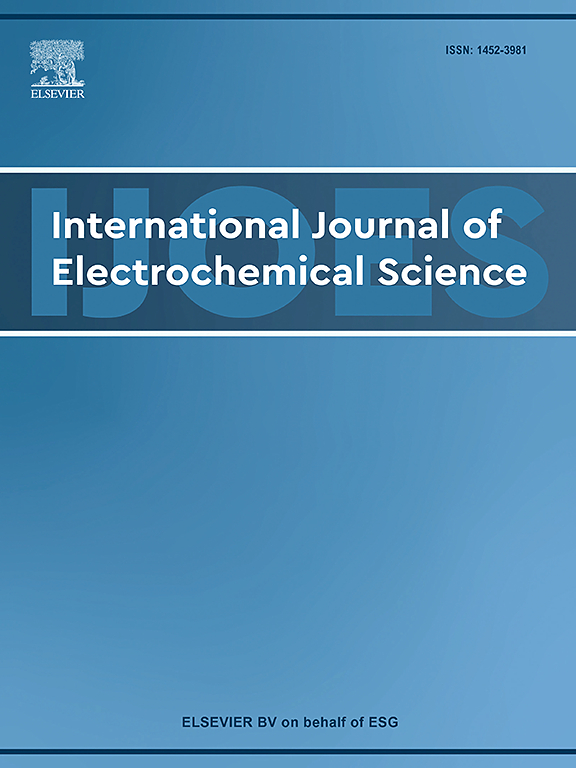Impact of strain on the corrosion resistance of 304 stainless steel welded joints using electrochemical methods and numerical modeling of stress corrosion
IF 1.3
4区 化学
Q4 ELECTROCHEMISTRY
International Journal of Electrochemical Science
Pub Date : 2025-01-01
DOI:10.1016/j.ijoes.2024.100910
引用次数: 0
Abstract
This study explores the effect of strain on the corrosion resistance of 304 stainless steel welded joints through electrochemical testing while also presenting a novel pitting model that accounts for the influence of stress and strain on pit growth behavior. Initially, bending experiments and open circuit potential tests were conducted on the welded joints, revealing that compressive stress increases the open circuit potential, while tensile stress decreases it. Subsequently, tensile tests and polarization curve assessments demonstrated that laser oscillating welding enhances both the tensile strength and corrosion resistance of the joints, outperforming traditional laser welding. The measured corrosion potentials were −0.25 V and −0.27 V, shifting to −0.34 V and −0.35 V after the tensile tests. Additionally, finite element simulations based on the Arbitrary Lagrangian-Eulerian method were used to model pitting corrosion propagation. The results indicated that pitting corrosion leads to uneven stress distribution and localized plastic deformation, with its development closely linked to the material's stress state. This results in increased stress as pits grow, consistent with the mechano-electrochemical (M-E) effect.
求助全文
约1分钟内获得全文
求助全文
来源期刊
CiteScore
3.00
自引率
20.00%
发文量
714
审稿时长
2.6 months
期刊介绍:
International Journal of Electrochemical Science is a peer-reviewed, open access journal that publishes original research articles, short communications as well as review articles in all areas of electrochemistry: Scope - Theoretical and Computational Electrochemistry - Processes on Electrodes - Electroanalytical Chemistry and Sensor Science - Corrosion - Electrochemical Energy Conversion and Storage - Electrochemical Engineering - Coatings - Electrochemical Synthesis - Bioelectrochemistry - Molecular Electrochemistry

 求助内容:
求助内容: 应助结果提醒方式:
应助结果提醒方式:


